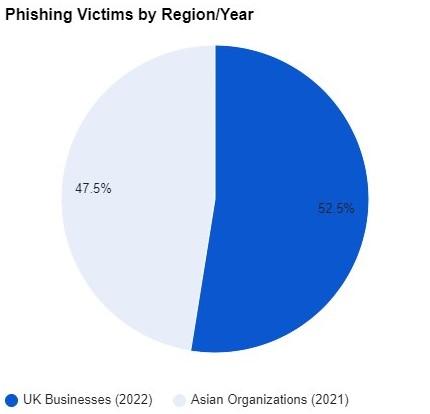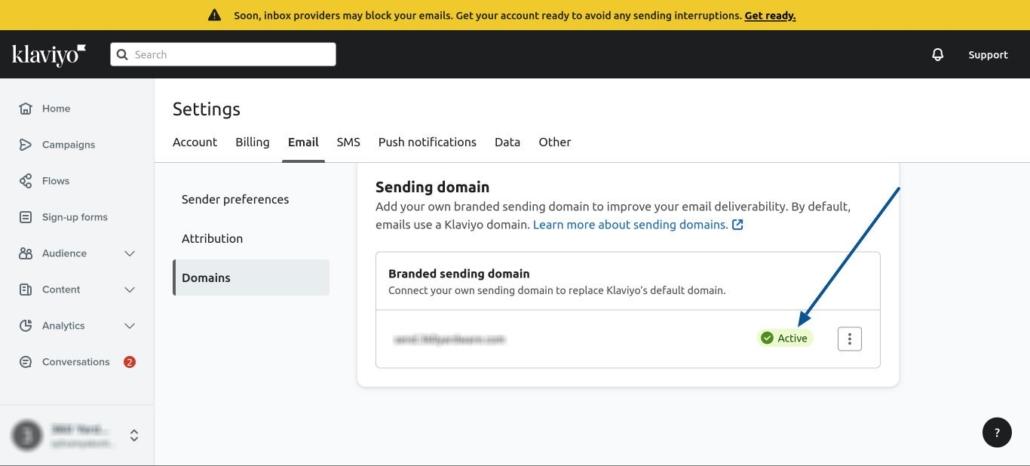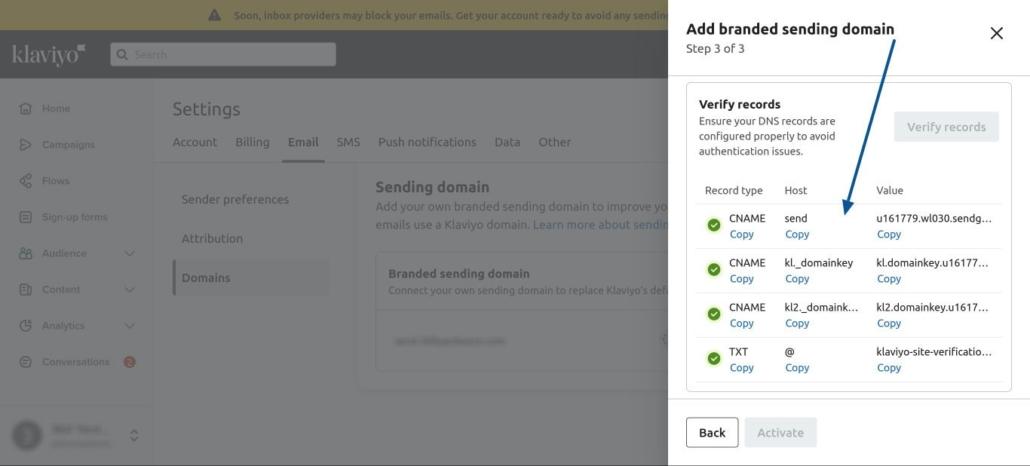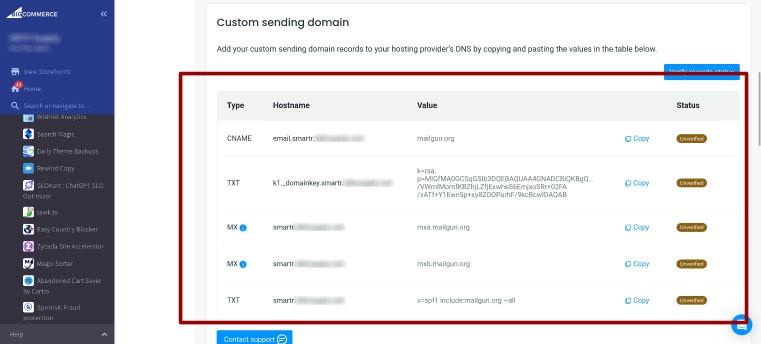Google and Yahoo’s 2024 Email Deliverability Rules for Bulk Senders
As we move towards a future where technology is constantly evolving, it’s reassuring to see that email security is also advancing. Email Deliverability Rules just got an upgrade!
With Google and Yahoo’s latest anti-spam and email protection measures, bulk email senders will find it harder to clutter your inbox and your inbox is about to become a lot safer and less cluttered. With their latest anti-spam and email security guidelines users will get only the emails that are desirable, without all that annoying spam. Thanks to these tech giants, stricter rules are coming in 2024 to keep spam out and make sure your emails are from who they say they are.
‘New Gmail protections for a safer, less spammy inbox‘ heralds a significant step towards a more secure, spam-free inbox experience, with the implementation of stricter authentication standards by Google & Yahoo too – ‘More Secure, Less Spam: Enforcing Email Standards for a Better Experience‘
This is not only good news for bulk email senders who will have to comply with these standards, but also for users who will have a more trustworthy and safe email experience.
Let’s consider the sheer volume of email interactions today: our world sends and receives a staggering 347.3 billion emails daily in 2023, with a significant 61.9% of these emails being opened on mobile devices—a 47% increase from 2019. This prevalence underscores the critical role email plays in our daily communications and highlights the importance of securing this platform against spam and phishing attacks. Notably, Google blocks 100 million phishing emails daily, a vital measure given that over 48% of emails in 2022 were spam, contributing to the cacophony of 3.4 billion spam emails sent each day.
The latest updates from Gmail and Yahoo aim to slice through this noise, ensuring that users receive only genuine communications. This is a beacon of hope for everyone, whether you’re inundated with emails or simply wish to keep your inbox clean and safe. Moreover, with an average email open rate of 18%, and the fact that most B2B and B2C marketers view email as an indispensable tool for nurturing leads and generating revenue, the significance of these email security advancements cannot be overstated. Interestingly, four out of five marketers would choose email over social media, further underscoring its value in our digital world.
So, what does this mean for you? These changes herald a new dawn for email security, promising a smoother, spam-free journey through your digital communications. By embracing these updates, we not only protect ourselves from cyber threats but also contribute to a safer and more trustworthy digital environment. Let’s dive in and discover how these changes will enhance our email experience, readying us for a more secure digital world.
Email Deliverability: Lifeline of Communication, Battlefield of Threats
Reaching your intended audience through email is no walk in the park. spam filters, ever-evolving algorithms, and changing user behaviors create a complex landscape that challenges even the most seasoned email marketers. But fear not, intrepid communicators.
As of February 1st, 2024, Gmail has begun enforcing new requirements to navigate these challenges. Maintaining a positive sender reputation through high engagement and low complaint rates is crucial in this environment. Meanwhile, Yahoo is in the process of general implementation, with stricter enforcement expected by June 2024, particularly for the one-click unsubscribe feature. Additionally, sender ID verification may become a requirement for high-risk industries.
Robust Email Authentication: A Barrier Against Deception
In Feb 2024, Gmail and Yahoo introduced compulsory email authentication for high-volume senders. This strategy is aimed at weeding out deceptive emails, ensuring that each message delivered to you comes from a genuine, authenticated source. By adhering to stringent authentication protocols such as SPF, DKIM, and DMARC, this measure will significantly diminish the chances of phishing and impersonation attacks, securing your digital communications.
How New Updates Shield You: Authentication & Spam Control
The 2024 updates by Gmail and Yahoo are designed to fortify your defenses against phishing attempts. By ensuring that emails are authenticated and maintaining low spam rates, these platforms are making strides toward minimizing the risk of phishing scams reaching your inbox and safeguarding your digital identity. Here’s how they’re setting the stage for a new era of email security:
Mandatory Email Authentication: Gmail & Yahoo Tighten the Grip
Both platforms implemented new bulk sender requirements in February 2024, focusing on sender authentication and user experience. By requiring email bulk senders to authenticate their emails using SPF, DKIM, and DMARC, Gmail and Yahoo significantly reduce the risk of impersonation and phishing emails. This ensures that emails are genuinely from their purported senders, making it harder for phishing attempts to reach your inbox.
Gmail & Yahoo’s 2024 Updates: Simplified Unsubscribing: Mastering Your Inbox
Yahoo’s June 2024 deadline for one-click unsubscribe implementation emphasizes the importance of offering quick and easy opt-out options. The updates bring an enhanced feature that allows users to easily disconnect from unwelcome email lists with just a single click. This improvement mandates that bulk emailers acknowledge and action unsubscribe requests promptly, within 48 hours. The goal is to maintain an inbox that reflects your current interests and preferences, without the hassle of navigating through unwanted emails.
Implementing Spam Rate Caps: A Cleaner Email Experience
In a bold move to purge inboxes of spam, Gmail and Yahoo will set and enforce strict limits on acceptable spam rates for bulk emailers. Those exceeding these limits risk being flagged, ensuring that only welcome emails make it through. This innovative measure is designed to drastically lower the influx of irrelevant and unsolicited emails, thereby elevating the quality of your email environment. Maintaining a good sender reputation is essential, especially with Gmail’s strict 0.1% ideal spam complaint rate and Yahoo’s 0.3% threshold. Focus on creating engaging content, building permission-based email lists, and practicing regular list hygiene to gain the trust of both email providers and your subscribers. This will help you avoid unwanted clutter and ensure your emails reach the right inboxes.
| Feature | Gmail | Yahoo |
| Spam complaint threshold: | 0.1% ideal, 0.3% maximum | 0.3% maximum |
| Enforcement timeline: | February 1, 2024 | February 2024 (general), June 1, 2024 (one-click unsubscribe) |
| Additional requirements: | None | May require sender ID verification for high-risk industries |
| Reputation system: | Yes, based on user engagement and spam complaints | Less transparent |
| Bulk sender definition: | Over 5,000 emails daily | Over 100,000 emails daily (unofficial) |
Defeating Phishing Scams:
Phishing stands as the most prevalent cybercrime, As per the AAG statistics with a staggering 3.4 billion spam emails flooding the digital space daily. It’s a leading cause of data breaches, largely through the exploitation of stolen credentials. Remarkably
“Google intercepts around 100 million phishing attempts every day, reflecting the sheer volume of this threat. With over 48% of emails in 2022 classified as spam and more than a fifth originating from Russia, the urgency for robust defenses becomes clear. Millennials and Gen-Z are particularly vulnerable, often finding themselves at the receiving end of these deceitful tactics.
Phishing Threats Exposed: Protecting Your Digital Identity
Phishing scams, ever-evolving in sophistication, pose significant risks to digital security, exploiting human trust to steal sensitive information. Understanding their varied forms is crucial in today’s digital landscape. Gmail and Yahoo’s upcoming 2024 updates play a pivotal role in fortifying users against these threats, marking a significant stride towards a more secure email ecosystem. In the UK alone, 83% of businesses hit by cyberattacks in 2022 identified phishing as the culprit, a trend mirrored across Asian organizations the previous year.

In above a pie chart, where a huge slice (83%) represents businesses in the UK phished in 2022. The remaining sliver shows the global threat, highlighting how widespread phishing is
The financial repercussions are alarming, with the average data breach costing organizations upwards of $4 million, and a single whaling attack potentially draining $47 million from a business.” as shown in the below image.

Types of Phishing Scams
- Standard Email Phishing: The most common form, targeting a broad audience with the aim of tricking individuals into revealing personal data, such as passwords and credit card numbers. These emails often mimic legitimate companies or organizations but lack personalization.
- Spear Phishing: Unlike the broad strokes of standard phishing, spear phishing targets specific individuals or organizations. These attacks are highly customized, leveraging gathered information to appear more convincing and bypass individual vigilance.
- Whaling: A subset of spear phishing, whaling targets high-profile individuals within organizations, such as executives. The content often pertains to legal or executive matters, tricking the victim into authorizing financial transfers or divulging confidential data.
- Clone Phishing: This tactic involves creating a nearly identical replica of a legitimate email previously sent, but with malicious links or attachments. The familiarity of the email increases the likelihood of victims engaging with the harmful content.
- Pharming: While not strictly an email-based scam, pharming redirects users from legitimate websites to fraudulent ones, aiming to collect personal and financial information. It often works in tandem with phishing emails that direct users to these compromised sites.
BigCommerce & Shopify React to New Email Security Updates: What You Need to Know
Heads up, business owners! New email security standards are coming, and major platforms like BigCommerce and Shopify are taking action. Here’s a simplified breakdown:
BigCommerce Update: Elevate Your Email Deliverability with Google and Yahoo’s New Authentication Requirements
Starting February 1, 2024, new mail authentication protocols will be in effect, necessitating action from domain owners. The essence of these changes revolves around the DNS records – SPF, DKIM, and now the recommended DMARC records.
These records play a crucial role in ensuring your emails are recognized as legitimate, thereby avoiding the dreaded spam folder or bouncebacks. BigCommerce has streamlined this process for you, especially with DKIM keys already in place for outgoing store emails.
However, checking and updating your SPF and introducing a DMARC record into your DNS settings is crucial to maintain seamless email communication with your customers.
BigCommerce’s guidance simplifies this transition, ensuring your store’s emails continue to reach your customers without interruption. For detailed steps on updating your records and to ensure compliance with these new requirements, visit the BigCommerce Changes to Google and Yahoo Email Authentication.
Shopify Merchants: Act Now to Comply with Google and Yahoo’s Email Deliverability Enhancements
Attention Shopify Merchants! The clock is ticking as Google and Yahoo roll out new email deliverability requirements, effective February 1, 2024. If you’re using a branded email address for your store’s communications, immediate action is required to ensure uninterrupted service.
Shopify is committed to helping you navigate these changes smoothly. The key steps include maintaining a low complaint rate (below 0.3%), authenticating Shopify to send emails on behalf of your domain, and implementing a DMARC policy with a minimum setting of p=none.
Failure to act by the deadline may result in Shopify automatically adjusting your sender email to store@shopifyemail.com, ensuring compliance but potentially affecting your brand’s email identity.
These updates aim to enhance the security and deliverability of emails and apply to anyone sending emails from a branded email address. The changes are as follows:
- DKIM, SPF, and DMARC Records: Shopify will automatically configure the necessary DKIM and SPF records for domains they host. If you’re hosting your domain on Shopify, they will insert a DMARC record with a policy of p=none if one is not already present.
- Branded Sending Domain: You must send emails from a branded domain. If Shopify hosts your domain, you’ll add or update your DKIM, SPF, and DMARC records directly in the Shopify admin under ‘Settings’ > ‘Domains’.
- One-Click Unsubscribe Link: This feature will be required for all emails to allow recipients to unsubscribe easily, which Shopify will handle as part of its infrastructure.
- Spam Complaints: Keep your spam complaint rate below 0.3%. It’s beneficial to use strategieslike double opt-ins and engaging content to keep this rate as low as possible.
For Shopify store owners using third-party email services like Klaviyo Smartrmail, you must set up branded sending domains within those services.
This includes configuring CNAME records provided by the third-party service. It’s important to note that Shopify does not accept NS records, so static IP for a sending domain equates to using CNAME records instead.
When integrating with services like Google Workspace, the admin area should guide you through adding appropriate MX records to your DNS, and you’ll need to add the recommended SPF record.
It’s essential to ensure you have admin rights within Google Workspace to carry out these changes.
Remember that each domain can only have one SPF record, but each subdomain can have its own SPF record that will override the parent domain’s SPF record.
For detailed guidance and support, Shopify encourages reaching out to the respective third-party service providers, and you can also check Shopify’s own resources and help documentation for further assistance. It’s crucial to take these steps as soon as possible to avoid any disruptions to your email marketing efforts
By taking action now, you can ensure your emails reach your target audience and avoid potential deliverability issues. Don’t let these updates slow you down – take advice from email deliverability consultants and embrace them as an opportunity to build trust and strengthen your online presence!
Case Study: Improve Email Deliverability with Klaviyo
Samyak Online understood the value of efficient email communication in the current internet-based society. However, they also understood the challenges associated with email deliverability, including inbox placement, spam filters, and sender reputation.
To address these challenges, Samyak Online email deliverability services partnered with Klaviyo, renowned for its advanced capabilities in email marketing automation and deliverability optimization.
Challenges Faced:
Before implementing Klaviyo, Samyak Online’s clients encountered various issues with email deliverability. Messages were often flagged as spam or failed to reach the inbox altogether. This hindered their communication efforts and compromised the effectiveness of their email campaigns.
Solution Implemented:
By leveraging Klaviyo’s robust features, Samyak Online embarked on a comprehensive strategy to enhance email deliverability for their clients while meeting the stringent requirements set by leading email service providers such as Google and Yahoo in 2024.
The key steps involved in this process included:
- Verification of Sending Domain:
Samyak Online ensured the authenticity of clients’ sending domains by successfully verifying them within the Klaviyo platform, aligning with the authentication standards mandated by Google and Yahoo. This step was crucial for building trust with email providers and improving inbox placement. The initial step involved authenticating clients’ sending domains. This critical move established a trusted foundation, improving deliverability and sender reputation. A checklist, confirmed within Klaviyo, marked this accomplishment, reflecting Samyak Online’s dedication to adherence and reliability (See Image 1)

- Dynamic Routing vs. Static Routing and Creation of Branded Sending Domain:
Recognizing the evolving preferences of email providers, Samyak Online implemented Klaviyo’s static routing capabilities to adapt to Google and Yahoo’s changing algorithms and policies. This proactive approach ensured optimized email delivery paths, enhancing the likelihood of inbox placement. In accordance with Google and Yahoo’s sender requirements, Samyak Online guided clients through the process of creating branded sending domains that complied with the latest authentication protocols. This included meeting specific requirements and adhering to best practices outlined by Klaviyo to enhance email recognition and credibility. To meet service providers’ requirements, Samyak Online established branded sending domains. This step not only complied with authentication protocols but also bolstered email recognition and credibility. An active status in Klaviyo’s settings panel showcased the successful activation of these domains (See Image 2).

- Generation and Update of DNS Records and Verification and Application of Domain
Samyak Online meticulously generated DNS records, configuring them within Domain Registrar GoDaddy. This ensured continued compliance and seamless email transmission under the updated standards, as evidenced by the detailed DNS configuration in Klaviyo’s domain verification process (See Image 3).Following verification of DNS records, Samyak Online verified and applied the sending domain within Klaviyo, ensuring alignment with Google and Yahoo’s authentication guidelines. This step validated the domain’s authenticity and prepared it for active use in email campaigns, meeting the criteria set by leading email providers.

- Warming of Sending Infrastructure:
In anticipation of Google and Yahoo’s emphasis on sender reputation, Samyak Online implemented a gradual warming process for clients’ sending infrastructure. This involved carefully increasing email volume to establish a positive reputation with ISPs and email providers, meeting the requirements for reliable inbox delivery.
Results Achieved:
Through strategic collaboration with Klaviyo and meticulous adherence to Google and Yahoo’s email sender requirements in 2024, Samyak Online witnessed remarkable improvements in their clients’ email performance. Key outcomes included:
- Significant increase in inbox placement rates on Google and Yahoo platforms
- Reduction in email bounce rates and spam complaints, demonstrating compliance with sender requirements
- Improved engagement metrics, such as open and click-through rates, indicating enhanced recipient trust and interaction
- Strengthened brand reputation and credibility in the eyes of Google, Yahoo, and other leading email providers
- Enhanced overall effectiveness of email marketing campaigns, resulting in greater ROI for clients.
Case Study: Samyak Online’s Adaptation to Google and Yahoo Email Security Updates for SmartrMail Clients
Background: In response to the 2024 email security updates announced by Google and Yahoo, aimed at reducing spam and improving email authentication, Samyak Online, a leading digital marketing and email deliverability service provider, has taken proactive measures to ensure its clients’ email marketing efforts via SmartrMail remain effective and compliant. These updates necessitate adherence to stricter email authentication protocols, including SPF, DKIM, and DMARC, alongside implementing easier unsubscribe processes to minimize spam complaints.
Challenge: The primary challenge for Samyak Online was to adapt its email marketing strategies to align with the new security standards without compromising on deliverability and engagement rates for its e-commerce clients using SmartrMail. The updates required a comprehensive overhaul of email authentication practices and a more user-friendly approach to managing unsubscribe mechanisms.
Solution: Samyak Online embarked on a strategic plan to ensure all client email campaigns sent through SmartrMail were fully compliant with the updated requirements. The steps taken included:
1. Email Authentication Overhaul:
Samyak Online audited and updated the SPF, DKIM, and DMARC records for all domains used in email campaigns to ensure they met the new authentication criteria. This step was crucial for proving the legitimacy of the emails, thereby preventing them from being marked as spam.
- Implementing Technical Solutions:
As part of Samyak Online’s strategy to meet Google and Yahoo’s new authentication requirements, the team focused on the technical setup required for each client using SmartrMail. The following steps were taken. - Updating DNS Records:
Samyak Online updated DNS records to align with best practices for email delivery. This included adding CNAME, TXT, and MX records, as shown in the screenshot from the platform’s settings panel (see Image A below). These records are crucial for the DKIM and SPF authentication processes, ensuring that emails sent via SmartrMail are verified and secure. - Verification of Domain Ownership:
By updating the TXT records with unique values provided by SmartrMail, Samyak Online was able to verify domain ownership and signal to email service providers that the emails originated from a trusted source. - Mail Exchange Setup:
The addition of MX records ensured that the email infrastructure was properly set up to handle the sending and receiving of emails for their clients’ domains. - Securing Email Deliverability:
The deployment of these records, as depicted in the screenshot, was a critical step in securing email deliverability and maintaining the clients’ sender reputation under the new security protocols.

2. Enhancing Unsubscribe Processes:
To comply with the easier unsubscribe requirement, Samyak Online implemented one-click unsubscribe links prominently in all emails. This not only made the process straightforward for users but also helped in maintaining low spam complaint rates.
3. Monitoring and Optimization:
Continuous monitoring of email deliverability and engagement metrics allowed Samyak Online to make data-driven adjustments to their clients’ campaigns, ensuring optimal performance under the new guidelines.
4. Education and Support:
Samyak Online provided comprehensive training for its clients on the importance of these updates and how they impact email marketing. Additionally, they offered ongoing support to navigate the changes effectively.
Results: Upon completion of the DNS setup, Samyak Online’s efforts yielded the following outcomes:
- The DNS records were successfully recognized and verified, as indicated by the ‘verified’ status in the SmartrMail interface.
- The client’s domain passed essential authentication checks when sending out emails, significantly reducing the risk of their emails being marked as spam.
- The quick adoption of these security measures ahead of the policy enforcement date ensured that the client’s email marketing campaigns continued uninterrupted and with high deliverability rates.
On the base note: Samyak Online’s proactive measures in updating the DNS settings for SmartrMail in BigCommerce platform ensured that the client’s email marketing campaigns were fully compliant with the latest email deliverability and security standards. This case study serves as an exemplar of Samyak Online’s commitment to excellence and foresight in the realm of email deliverability services. By navigating the complexities of email security compliance, Samyak Online has not only fortified the client’s email infrastructure but also provided a template for other BigCommerce users to follow, demonstrating both their expertise and their role as a leader in the email deliverability space.
Conclusion
The 2024 updates from Gmail and Yahoo represent a significant step forward in the fight against email-based cyber threats. By introducing mandatory email authentication, easy unsubscribe options, and strict spam rate thresholds, these platforms are setting new standards for email security. Amidst adapting to these changes, you might wonder, “Does Your Email Marketing Not Deliver? Check & Improve Email Deliverability!” This call to action is crucial for businesses striving to comply with the new requirements and for anyone eager to ensure their email marketing efforts are both effective and secure. With these updates, the future of email communication looks brighter and more secure than ever, promising a safer inbox for users and a more reliable platform for marketers.
About Author
Subhash Jain is a leading figure in the email deliverability space, known for his expertise in navigating the complexities of email marketing and securing email communication. As the founder and driving force behind Samyak Online, Subhash has built a reputable agency focused on providing clients with cost-effective, results-oriented solutions to maximize inbox placement rates. Subhash’s expertise extends beyond traditional deliverability methods. At the helm of Samyak Online, he has assembled a professional team dedicated to offering effective, results-focused solutions for improving inbox placement rates. Beyond traditional strategies, Subhash and his team excel in DMARC policy implementation, ensuring clients comply with regulations and enhance deliverability, especially in India. To optimize your marketing campaign outcomes, get in touch with us and we’ll make sure you adhere to the email deliverability standards.


Leave a Reply
Want to join the discussion?Feel free to contribute!